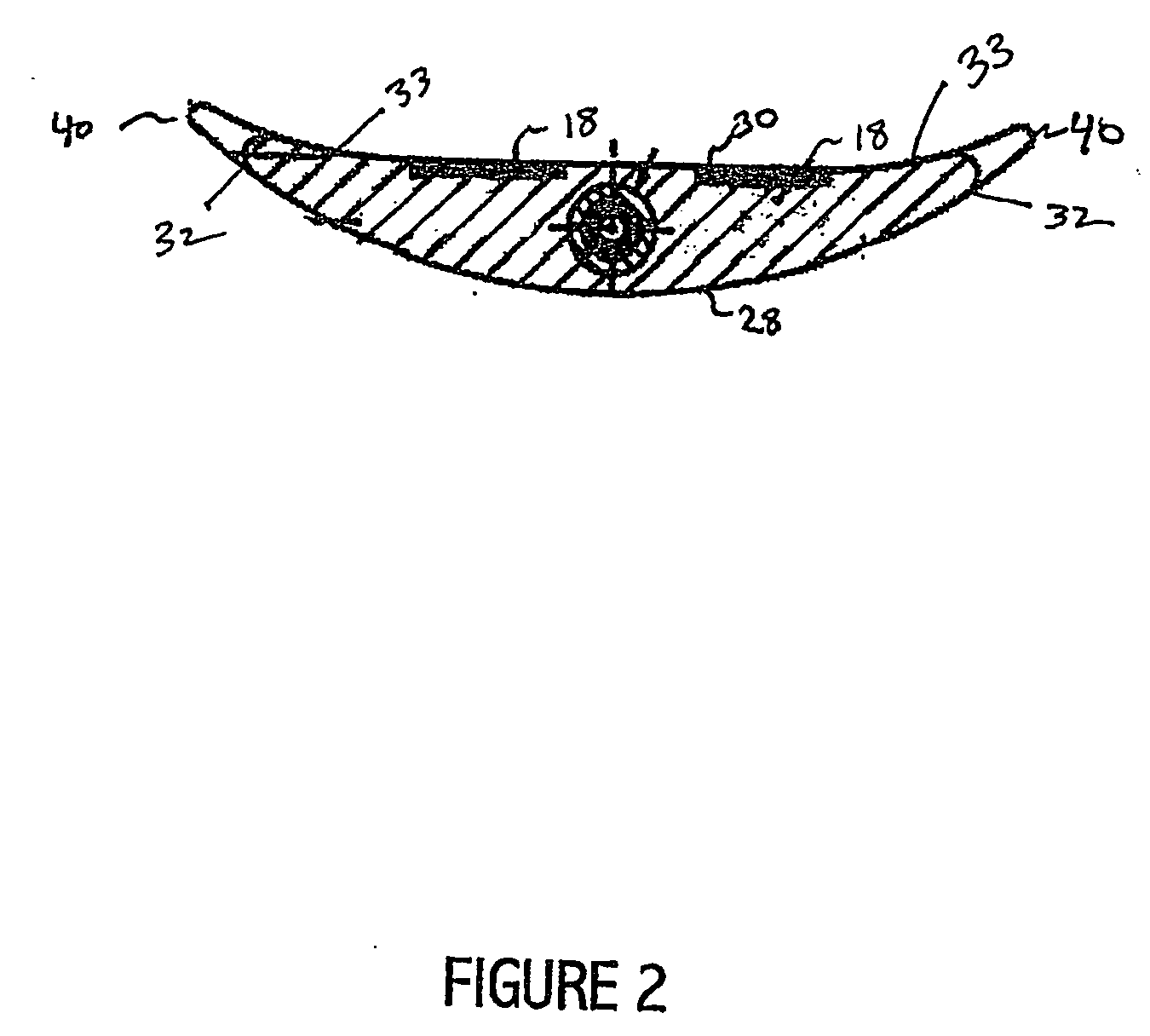Winged electrode body for spinal cord stimulation
a technology of electrode body and spinal cord, applied in the field of epidural electrode, can solve the problems of increasing unnecessary power consumption, affecting the effect of electrical coupling, so as to improve electrical coupling, prevent axial movement, and focus electrical energy
- Summary
- Abstract
- Description
- Claims
- Application Information
AI Technical Summary
Benefits of technology
Problems solved by technology
Method used
Image
Examples
Embodiment Construction
[0023] Preferred embodiments of the present invention are illustrated in the FIGURES, like numerals being used to refer to like and corresponding parts of the various drawings.
[0024] An implantable epidural lead for spinal cord stimulation is presented that includes a curved-back and winged-tipped paddle with a flat inner face having an array of electrodes coupled to conductors within a lead body. The conductors couple to a pulse generator or other stimulation device. The curved and winged paddle provides more complete electrical stimulation coverage to targeted human tissue by minimizing the potential gap between electrodes and targeted fibers.
[0025]FIG. 1 provides an illustration of an epidural lead 10 for spinal cord stimulation comprises at least one lead body 12 and a paddle 14. Paddle 14 further comprises an array of electrodes 18 coupled at one end to lead body 12. Lead body 12 further comprises a number of wire conductors. The actual number of wire conductors depends on th...
PUM
 Login to View More
Login to View More Abstract
Description
Claims
Application Information
 Login to View More
Login to View More - R&D
- Intellectual Property
- Life Sciences
- Materials
- Tech Scout
- Unparalleled Data Quality
- Higher Quality Content
- 60% Fewer Hallucinations
Browse by: Latest US Patents, China's latest patents, Technical Efficacy Thesaurus, Application Domain, Technology Topic, Popular Technical Reports.
© 2025 PatSnap. All rights reserved.Legal|Privacy policy|Modern Slavery Act Transparency Statement|Sitemap|About US| Contact US: help@patsnap.com



